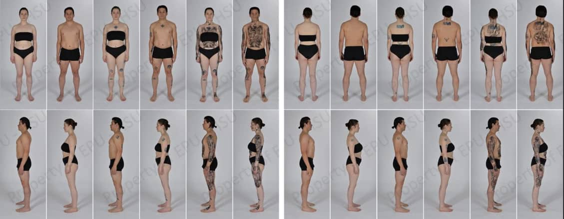Psychologists have discovered how having a tattoo affects the perception of one's appearance.
A new study involved 487 participants aged between 16 and 76 years. As an incentive, a gift certificate worth 25 euros (over 2700 rubles at the current exchange rate) was raffled among them.
Using an online survey, volunteers were asked to evaluate images of two models — one male and one female — with and without tattoos. The degree of tattoo coverage in various photographs ranged from light and moderate to pronounced, very strong, and extreme, with patterns present even on the face in the latter case.
Participants assessed the attractiveness of the models using a seven-point Likert scale. In the subsequent analysis of the results, psychologists noted the age of respondents (over or under 50 years), whether they had tattoos themselves, and their experience in the tattoo industry, as volunteers with these parameters were specifically included in the survey.

Overall, people without any body art were deemed more attractive. The worst ratings were given to photographs where the models had tattoos on their faces.
However, results varied. Respondents under 50 years were more tolerant of body ink and rated the photographs of extremely tattooed models higher than older participants.
A similar trend was observed among volunteers with tattoos and tattoo artists. They also awarded higher scores to individuals with a greater number of tattoos. However, facial tattoos were an exception. The appearance of those with facial tattoos received the lowest positive evaluations, even among tattoo professionals.
Thus, the study indicated that despite the rising popularity of tattoos, people find the human body in its natural form more attractive. Psychologists linked this preference to the fact that tattoos can distort the body's natural symmetry.
According to the authors of the article published in the journal PLOS One, the results suggest that the peak of tattoo enthusiasm has likely passed. With the proliferation of body art, tattoos have ceased to be something special and unique. Researchers believe that this may lead to a decline in interest in tattooing, especially among the younger generation.
Additionally, there have been increasing alarming reports about the health consequences of tattoos. Specialists from the Binghamton University chemical laboratory (New York, USA) discovered unreported hazardous substances in 90% of tattoo inks. In another recent study, Swedish doctors confirmed a link between the presence of tattoos and malignant lymphoma, as well as its subtypes.